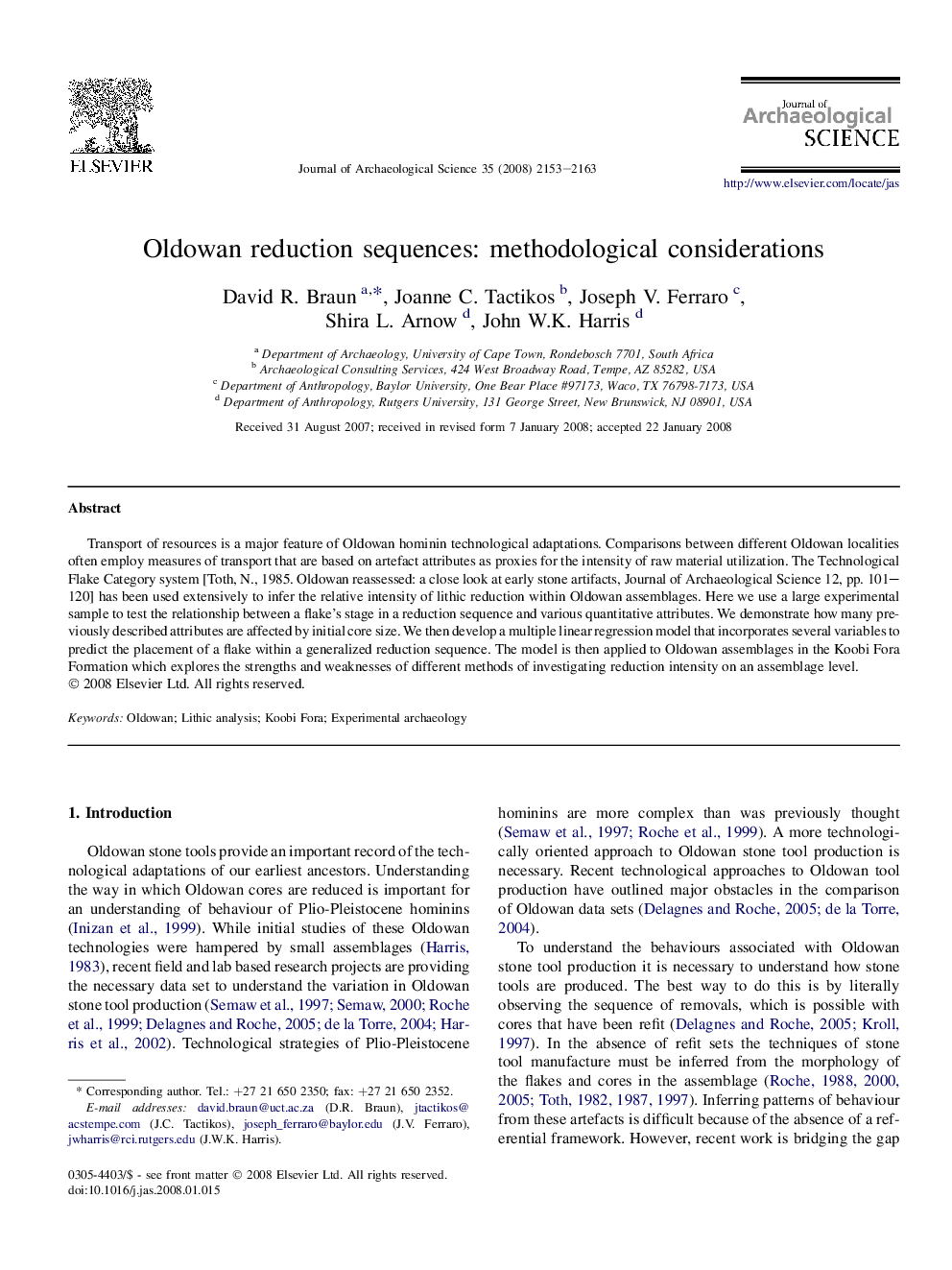| Article ID | Journal | Published Year | Pages | File Type |
|---|---|---|---|---|
| 1037064 | Journal of Archaeological Science | 2008 | 11 Pages |
Transport of resources is a major feature of Oldowan hominin technological adaptations. Comparisons between different Oldowan localities often employ measures of transport that are based on artefact attributes as proxies for the intensity of raw material utilization. The Technological Flake Category system [Toth, N., 1985. Oldowan reassessed: a close look at early stone artifacts, Journal of Archaeological Science 12, pp. 101–120] has been used extensively to infer the relative intensity of lithic reduction within Oldowan assemblages. Here we use a large experimental sample to test the relationship between a flake's stage in a reduction sequence and various quantitative attributes. We demonstrate how many previously described attributes are affected by initial core size. We then develop a multiple linear regression model that incorporates several variables to predict the placement of a flake within a generalized reduction sequence. The model is then applied to Oldowan assemblages in the Koobi Fora Formation which explores the strengths and weaknesses of different methods of investigating reduction intensity on an assemblage level.
